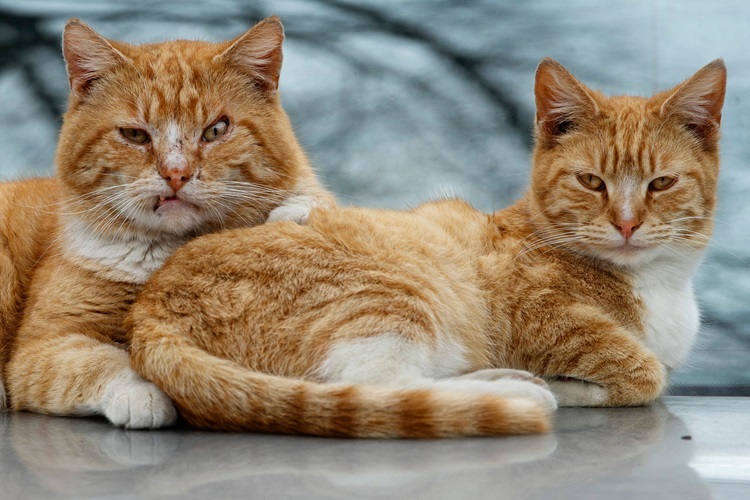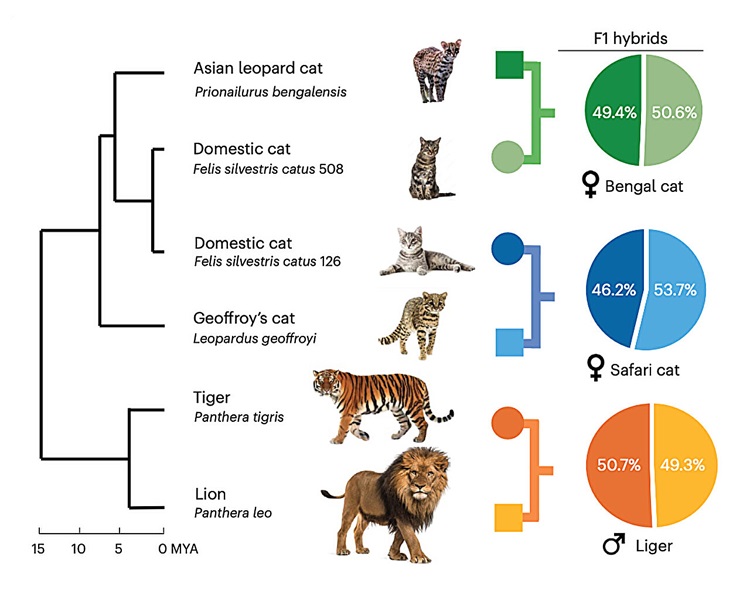Genome project reveals new secrets about cat evolution
Posted 17 November 2023

New insights into how the feline family evolved into so many different species like tigers, lions, and domestic cats have been uncovered.
An international team, including scientists at University College Dublin and the Texas A&M School of Veterinary Medicine & Biomedical Sciences (VMBS), explored cat evolution through the ages and found how different genetic changes in cats relate to survival abilities like the ability to smell prey.
Using new, highly detailed genome sequences, (opens in a new window)Dr Graham Hughes, UCD Ad Astra Fellow and Director of the UCD Centre of Bioinformatics, his PhD student Colleen Lawless found the role that genetic variation plays in allowing cat species to adapt to different environments.
“Cats are predators relying heavily on their sense of smell to detect prey. However, the cat family is very diverse, with each one having their own unique sensory evolutionary history. These incredibly high-quality genomes have allowed us to map each of the hundreds of olfactory and pheromone receptors within and across species,” said Dr Hughes, whose main area of research is sensory genetics in animals.
“These results allow us to understand the role of genetic variation in allowing cat species to adapt to different environments. It also allows us to uncover the sensory genes all cats need, and the ones specific to a lion or a tiger”.
This sensory research found a big difference between the two great feline species for certain odorant genes, added Dr Hughes.
“We think the large difference has to do with lions being very social animals living in family groups and tigers living a solitary lifestyle. Lions may have a reduced reliance on pheromones and other odorants because they’re constantly around other lions, reflected in the fewer genes of this type in their genomes.”

By comparing genomes of several cat species, the study, (opens in a new window)published in Nature Genetics, not only showed the genetic information for traits like fur, colour and size but that cat genomes tend to be more stable than what is seen in other mammals - having just a fraction of the blocks of DNA known as segmental duplications that would be observed in primates.
These long DNA sequences have been associated with chromosome rearrangements, and as they increase in the genome, chromosomes become more likely to rearrange.
While humans and chimps show a large amount of variation in their chromosome layout and arrangement, domestic cats and their much larger cousins show very little overall structural differences - a consequence of which is that feline chromosomes from different species are a lot alike, with those in lions not that much different than those in domestic cats.
“Our goal was to better understand how cats evolved and the genetic basis of the trait differences between cat species,” said Dr. Bill Murphy, a VMBS professor of veterinary integrative biosciences who specialises in cat evolution.
“We wanted to take advantage of some new technologies that allow us to create more complete cat genomic maps.
This new information about the evolution of cats was made possible through a new approach to genome sequencing called trio binning, which allows researchers to sequence the most difficult regions of a genome. This new technology also makes separating maternal and paternal DNA much easier.
“Trio binning allows us to take DNA from an F1 hybrid – an animal whose DNA is split 50-50 between 2 parents from different species and separate the 2 complete sets of DNA” said UCD alumnus Dr Nicole Foley, who worked on the study as part of the team in Texas.
“This lets us two genomes for the price of one – much more bang for your buck!”
“We’re entering a new era of accessible high-quality genomes allowing us unprecedented insight into how sensory perception evolves and its role in species evolution” added Dr Hughes. “It’s a very exciting time for comparative genomics and genome sequencing”.
By: David Kearns, Digital Journalist / Media Officer, UCD University Relations
To contact the UCD News & Content Team, email: newsdesk@ucd.ie






